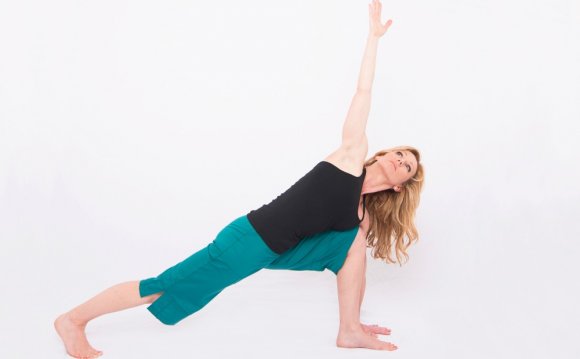
- Five minutes of morning yoga can ready the body and mind for the day
- Breath awareness is an important part of a morning yoga routine
Although it would be nice to devote more time to morning yoga, the stress of squeezing an hour-long class into a harried schedule might outweigh the benefits. When time is limited, why spend an hour doing something that you can effectively accomplish in five minutes?
My morning yoga practice is designed to efficiently get the body and mind ready for optimal use the rest of the day. The sequence covers a full, functional range of motion that counters our bodies' dominant-side tendencies and inspires movement we might not otherwise experience over the course of a routine day. This not only makes us feel great but can also prevent injury the same way I train my pro athletes for injury prevention, by taking them out of their muscular compensation patterns.
The sequence below should be done with breath awareness, which is why all of my instructions link breathing with movement. Before even getting out of bed, take five long, deep breaths in and out of your nose to establish a consistent rhythm and awareness of your respiration. Pay special attention to your exhales, ensuring that you release all of the air from your lungs and feel your lower ribs move in and down. By bringing your attention to your breath and body first thing, you avoid the pitfall of immediately focusing on your to-do list before you're mentally prepared.
Mountain pose with prayer hands
When you first get out of bed, stand with feet hip distance and palms together at the center of your chest. Feel that all of your major joints - shoulders, hips, knees and ankles - are aligned vertically and your weight is centered. Tune into the expansion and contraction of your ribcage as you lengthen and deepen your breath. Check in with your jaw, collarbones and low back, releasing any tension you find in these areas. Hold this pose for at least five breaths as you make a conscious connection with your body and set a positive intention for your day or repeat a mental mantra that is important to you.
Mountain pose with arms up
Inhale to raise your arms up, aligning your hands above your shoulders, if possible. Take three long, deep breaths. On inhales, focus on keeping your arms straight as you reach upward. On exhales, keep reaching up, but drop your ribcage and shoulder blades down to create more length through your neck muscles while you gaze straight ahead.
Standing side bend
Standing with your arms overhead, take your right wrist in your left hand. Exhale deeply as you side bend to the left. Keep your chest open and gaze facing forward. Engage your left-side oblique muscles to help stabilize the pose as you take two long, deep breaths. On your third inhalation, rise back to standing. Repeat on the other side, holding the opposite wrist in the opposite hand.
Low lunge
From standing, exhale as you step your right foot back into a low lunge with your fingertips, or palms, if you can reach, down on either side of your forward left foot. Try to create a long diagonal line from your right heel to the crown of your head, maintaining a neutral spine. If you find that balance is an issue, modify by dropping your back knee. Stabilize yourself by keeping weight evenly distributed through your front foot and engaging your core and back glute (buttock). Take a breath or two in this position.
Twisting low lunge
Add a twist to your low lunge by rotating from your mid back and opening your chest to reach your inside arm upwards in line with your shoulder. Use breathing biomechanics to help you rotate by focusing on inhalations to open your rotating-side ribs and exhalations to internally rotating your lower, opposite-side ribs. After a couple of breaths in your twist, bring your hand back to the low-lunge starting position and step forward to return to standing. Repeat on the other side from low lunge through twisting low lunge and back to standing.
Rag doll
After returning to standing from your low lunge, exhale as you bend forward, hinging from your pelvis—not your low back. Bend your knees as much as you need to for comfort. Hold opposite elbows (as shown) or interlace your fingers behind you and reach your arms upward to add chest-opening shoulder extension. Remain inverted for two or three breaths before returning to standing upright.
Standing backbend
Reaching your arms upward, like you did in mountain with arms up, stabilize through your core as you lift your chest and extend from your mid back, directing your arms and head gently backwards. Initiate the backbend from the middle of your back to avoid hinging or compressing your low back. Hold for two or three breaths. Return to standing with your palms together at the center of your chest.
Personally, I like to complete my morning practice by sitting on the edge of my bed with my eyes closed, taking a few more long, deep breaths as I recall my positive intention or mantra, and then I'm ready for anything!









